Kazeta: The Linux OS That Makes Modern Games Feel Like ’90s Consoles
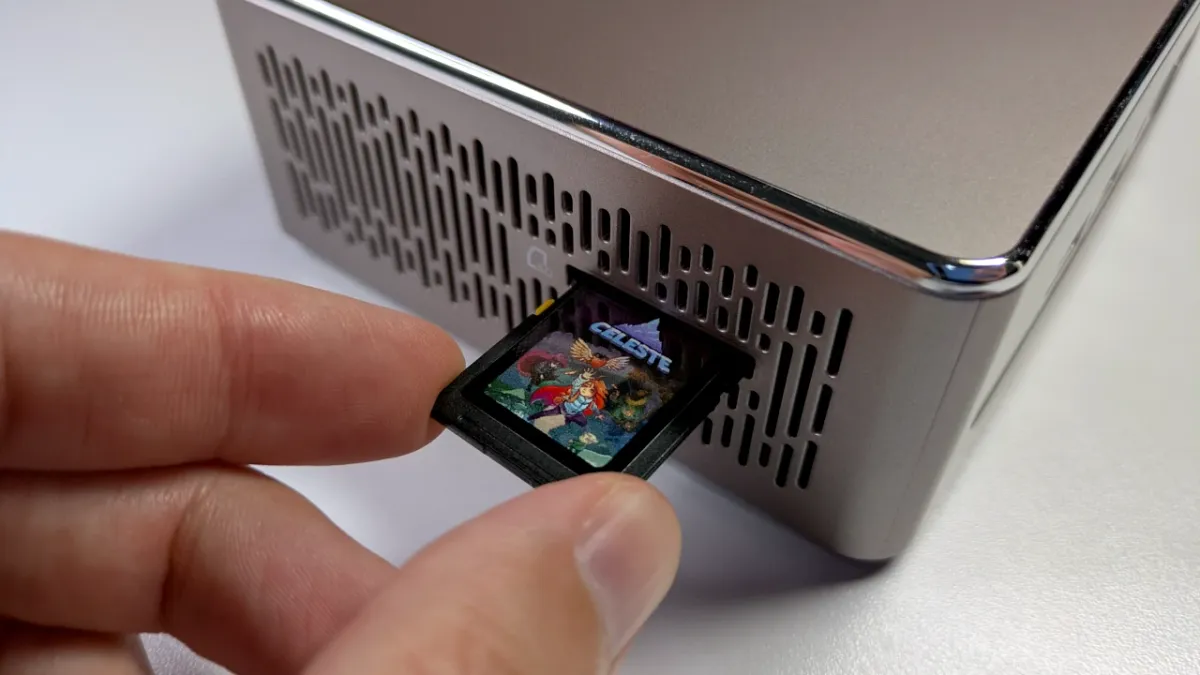
Modern gaming is a complicated place. On PC and consoles alike, we’ve grown used to digital storefronts, cloud accounts, patches, launchers, updates, and all the small frictions that stand between buying a game and actually playing it. For many, it’s just ‘how things are now.’ But for Alkazar, creator of ChimeraOS and now the developer of a brand-new project called Kazeta, that creeping complexity had gone too far.
Kazeta is his answer: a Linux-based gaming operating system that throws away almost everything about modern game delivery in favor of simplicity and physicality. It’s named after the Czech word for “cassette,” and the concept is as bold as it is nostalgic: you just load a DRM-free game onto a cartridge (an SD card), you slot it in, power on, and you’re playing. No menus, no logins, no software setup. Just you, your game, and a kind of cart in your hand.
For Alkazar, Kazeta is both a technical project and a very personal statement about what gaming could feel like again.
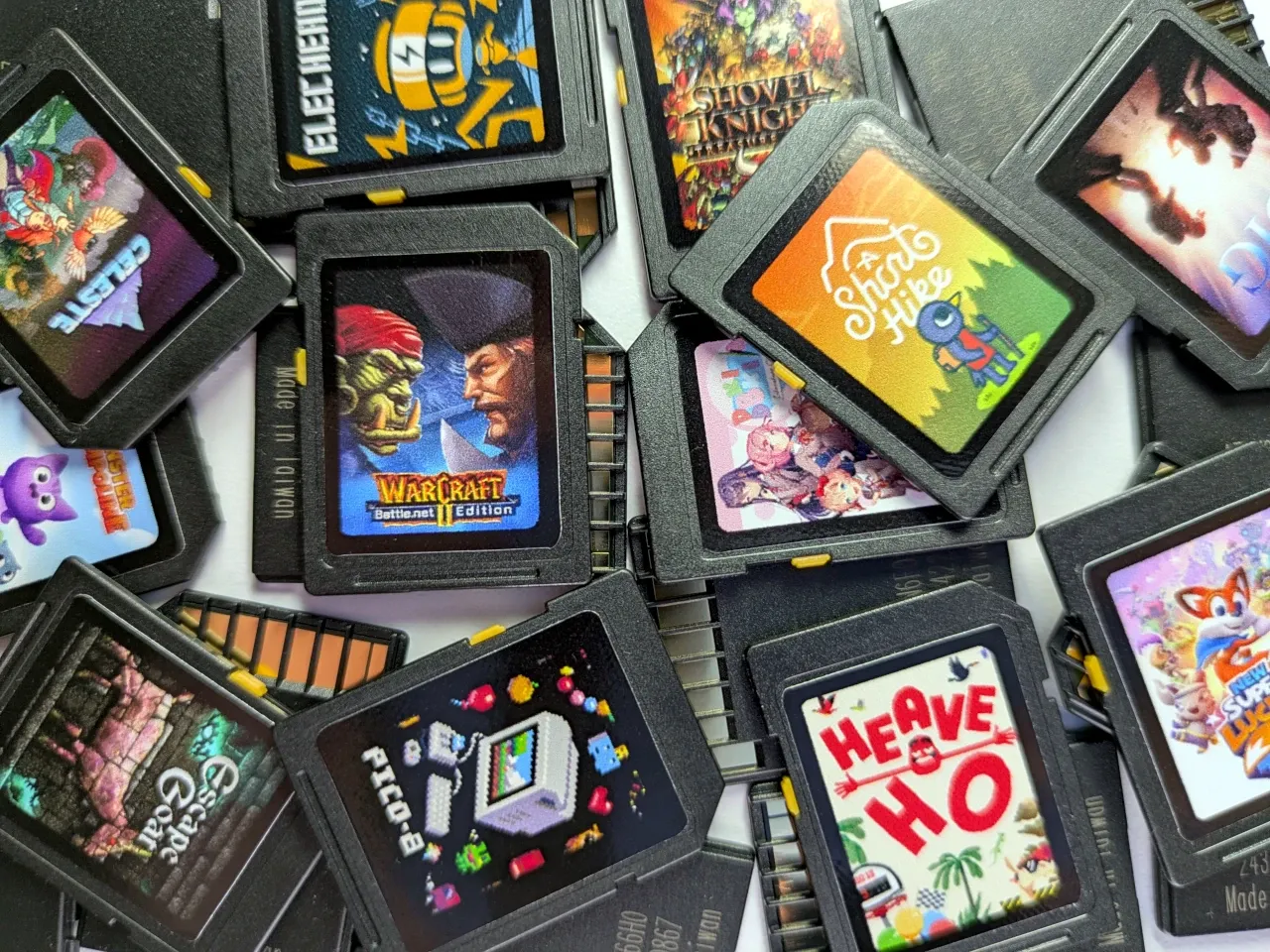
Where Kazeta Came From:
When asked what led him here, Alkazar didn’t point to a single reason, but a combination of experiences that snowballed into a project he couldn’t ignore.
“In the last decade I have been gaming almost exclusively on SteamOS-like systems and have not kept up with modern console gaming and what that is like,” he explained. “In recent years I started playing retro games on original hardware. Over time I started adding more and more consoles and eventually got to playing some modern ones. Consoles such as the Wii U, PS4, and Xbox One. These were just awful experiences compared to the older consoles. You needed accounts and online connections and you had to install games that took forever. I had just assumed modern consoles were a good experience, but they were barely any better than the PC gaming experience. Sometimes worse.”
That realization, that even dedicated gaming hardware had lost the immediacy of its predecessors, planted the first seed. “I thought, why can’t we have the immediacy and simplicity of the older consoles?”
But the idea really crystallized when he watched his own family struggle. “The second and probably most important catalyst was that I noticed non-technical members of my family would find playing games on older systems like the NES easy and engaging, but were completely lost when it came to using modern consoles or interfaces such as Steam Big Picture. Modern gaming has left these ultra casual gamers behind.”
The moment that stuck most came from one person: “You could say that Kazeta was really born out of wanting an easy way for my mom to play Tetris. She will play a video game maybe once or twice a year and only in ideal conditions. If she encounters even the tiniest barrier, she will just go do something else. With Kazeta, she can play a simple game without me having to be there to guide her through launching and turning off the game.”
What started as a frustration became a mission. “I have a tendency to get sucked into things, and the idea for Kazeta really just grabbed me. I thought it was unique and I wanted something like it to exist. I HAD to build it. I saw a relatively easy path to realizing it using tools I already developed for previous projects and went for it.”
Design Philosophy: Simplicity Above All:
If there’s one idea that runs through every part of Kazeta, it’s simplicity. Modern game launchers and operating systems tend to assume a player wants features: store integrations, achievements, cloud services, social layers, overlays. For Alkazar, those very layers are what push many people (especially non-technical players) away.
“You’ve mentioned that non-technical players can get lost in Steam’s menus or even struggle with basic actions. How did that influence your design of Kazeta, and what specific choices did you make to simplify the experience compared to traditional gaming OS options?” I asked him.
His answer was direct: “It inspired me to keep things as simple as absolutely possible and to make as many user decisions as possible grounded in the physical world. You select the game you want to play by choosing your cartridge in physical space. You turn off the game by pressing a physical power button. These are obviously not new ideas, just taken from the past. This also naturally led to the save data management ‘bios’ screen, where your save data, while not represented in physical space, is represented in the UI with a simple icon corresponding to each game.”
That back-to-basics design thinking shapes everything Kazeta does. Games are not buried in menus, or hidden behind a library interface you have to scroll through. There’s no ‘continue where you left off’ widget or friends list to dismiss. Instead, the physical cartridge itself, a little SD card labeled with a game’s title, becomes the launcher.
In this way, Kazeta isn’t trying to outdo Steam Big Picture or Playnite with its own digital front end. It’s opting out. The game itself is the centerpiece, and the player’s only real task is deciding which cartridge to slide in today.
It’s not a flashy innovation, but a deliberate subtraction. In Kazeta, less really is more.
For Alkazar, Kazeta isn’t just about making the act of launching a game simpler. It’s also about restoring something modern gaming has lost: the feel and function of physical collections. Digital storefronts are convenient, but they come with clutter, forgetfulness, and a sense of disposability.
He put it plainly when we asked what’s lost in today’s all-digital world of games.
“There are a few things I have noticed over the years about physical collections:
- They are a lot easier and nicer to browse through, this is particularly important for guests, especially younger children.
- They act as a filter and naturally limit you from going overboard and buying a bunch of games you won’t actually play.
- They can be easily shared! It was a magically nostalgic moment when I recently loaned an NES game to a neighbour.
- I have a large digital library, spread across multiple consoles and PC stores. I often forget what is where and even that I have a specific game. I will start playing a game, get distracted by something else, then forget it even exists. With a physical collection, I can avoid this problem.”
That idea of browsing and sharing stands in sharp contrast with the way many of us use PC libraries today. Scrolling through hundreds of digital titles, some never even installed, others forgotten, can feel overwhelming. By contrast, having a handful of cartridges on a shelf makes your library tactile and finite.
This is why Kazeta treats physical storage media not as a technical necessity, but as part of the design. An SD card with a label becomes a cart you can hand to a friend. A stack of carts on a desk is both a collection and an invitation to play. It’s not about convenience in the cloud...it’s about presence in the room.
And perhaps most importantly, physical media encourages players to focus. “They act as a filter and naturally limit you from going overboard and buying a bunch of games you won’t actually play,” Alkazar said. Instead of accumulating hundreds of digital impulse buys, each cartridge is a deliberate choice.
Kazeta, then, is more than an operating system. It’s a framework for rethinking what it means to own a game, and how collections can be enjoyed, preserved, and passed around.
Preservation / BIOS:
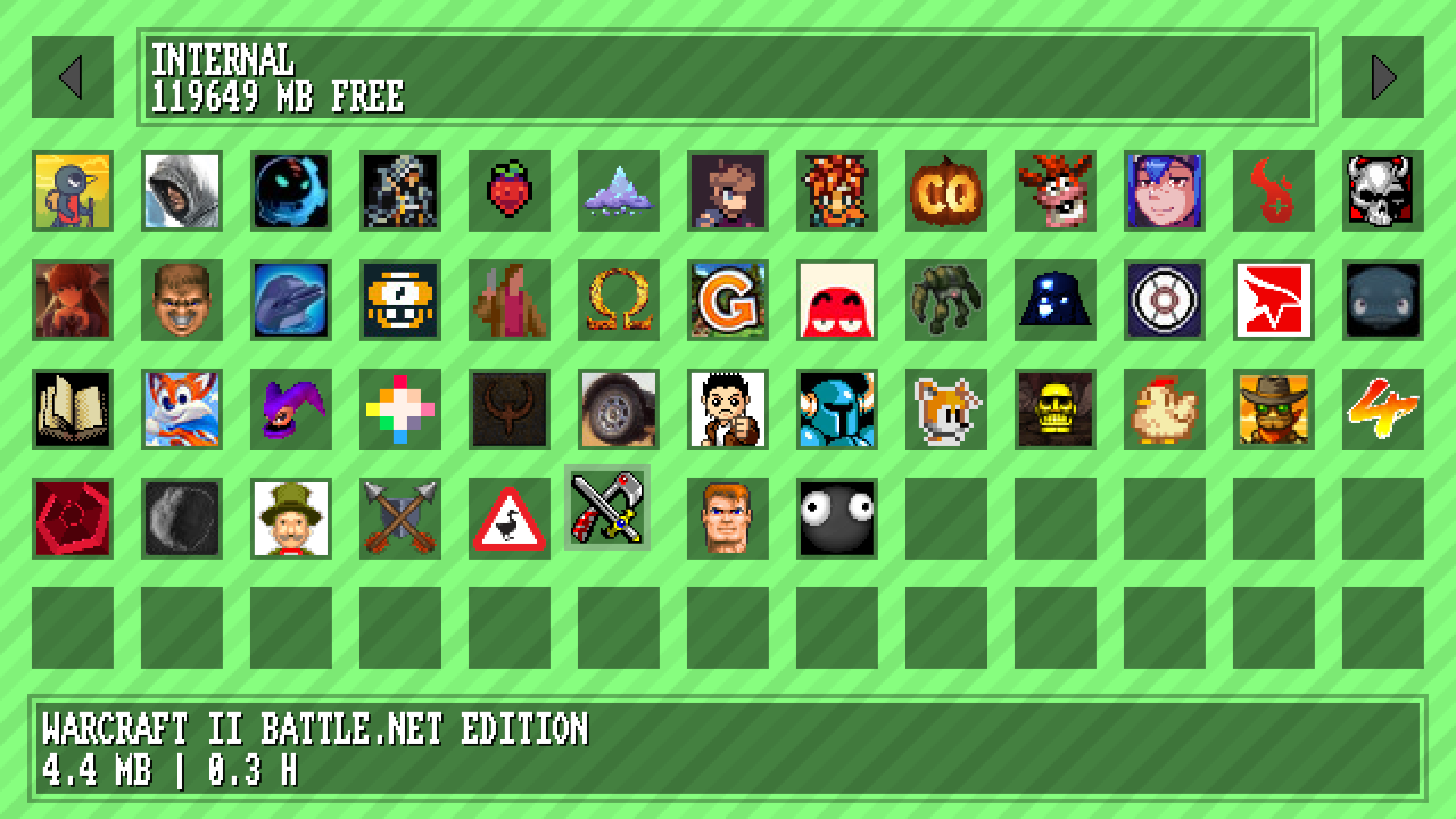
Kazeta isn’t just a nostalgia trip. It’s also a statement about preservation. The way Alkazar designed it, the cartridges themselves are treated as read-only. That means once you’ve created a cart, the game files remain untouched forever. Saves are captured separately by the system, keeping the original game installation pristine.
When I asked if he saw this fitting into the larger conversation around ownership and preservation, his answer was clear: “Yes, definitely. This is one of the goals of Kazeta. But further, I want to combine preservation with immediacy. Preserving a game installer is not enough for me, because it is a barrier to play the game. If you create a Kazeta cart, you can play it immediately, any time you want, with no additional steps. The work is front loaded, but also only needs to happen once.”
That distinction between saving a copy of a game and being able to play it instantly is at the heart of Kazeta’s design. Collectors might have terabytes of installers backed up, but loading one of them years later often means fighting with compatibility, reinstallation, or missing services. A Kazeta cart, by contrast, is more like popping in an NES cartridge: you put it in and go.
The ethos extends even to the BIOS screen, which only appears if no cartridge is inserted. Instead of being a hub for downloads, patches, or accounts, the BIOS in Kazeta is just for saves: clean, minimal, and visual. Each game you’ve played shows up as a little icon, letting you check and manage your progress without touching the game files themselves.
It’s a small feature, but one that carries echoes of the ’90s, when consoles like the PS1 or Dreamcast turned save management into part of the ritual of gaming. It’s also a reminder that Kazeta is designed not to overwrite or alter your games, but to honor them as they are: artifacts worth keeping, revisiting, and protecting.
In this way, Kazeta positions itself at the crossroads of nostalgia and sustainability. It asks: what if the way we preserve games was also the way we played them?
Console Inspirations:
Kazeta’s design is steeped in the spirit of the ’90s consoles, but it’s not a direct copy of any single system. Alkazar drew lessons from several, mixing inspiration from the PS1, PS2, Saturn, Dreamcast, GameCube, and Xbox.
“I looked at all the major ones: PS1, PS2, Saturn, Dreamcast, GameCube, Xbox. I think I probably took a little bit from all of them, even if it was just inspiration for terminology,” he said.
Among these, the Xbox BIOS stands out conceptually. “The Xbox BIOS is probably the closest conceptually to Kazeta, but obviously differs greatly in design. The Xbox, like Kazeta, mainly stores game save data on the internal drive instead of exclusively on external memory cards.”
Initially, Alkazar had considered leaning more toward the PS1 BIOS. “I initially wanted to make something closer to a PS1 BIOS, but Kazeta needed to be able to handle any number of connected external storage media/memory cards.” Still, he holds a fondness for that classic interface: “I have a particular fondness for the PS1 BIOS as that was an influential console that I had back in the day and is the system I think of when I think of a console with a BIOS. I do also really love the fun animations of the Dreamcast BIOS.”
These influences show up not as pixel-for-pixel reproductions but as guiding principles. Kazeta adopts the clarity, ritual, and immediacy of those older systems: boot up, select a game, and play. Every element from the save icon in the BIOS to the way cartridges are handled echoes a time when hardware, software, and play were tightly intertwined.
It’s a careful balance of honoring the past while solving modern problems, like supporting any external storage, handling multiple games, and preserving save data separately from the original game files.
Imagining Kazeta Hardware:
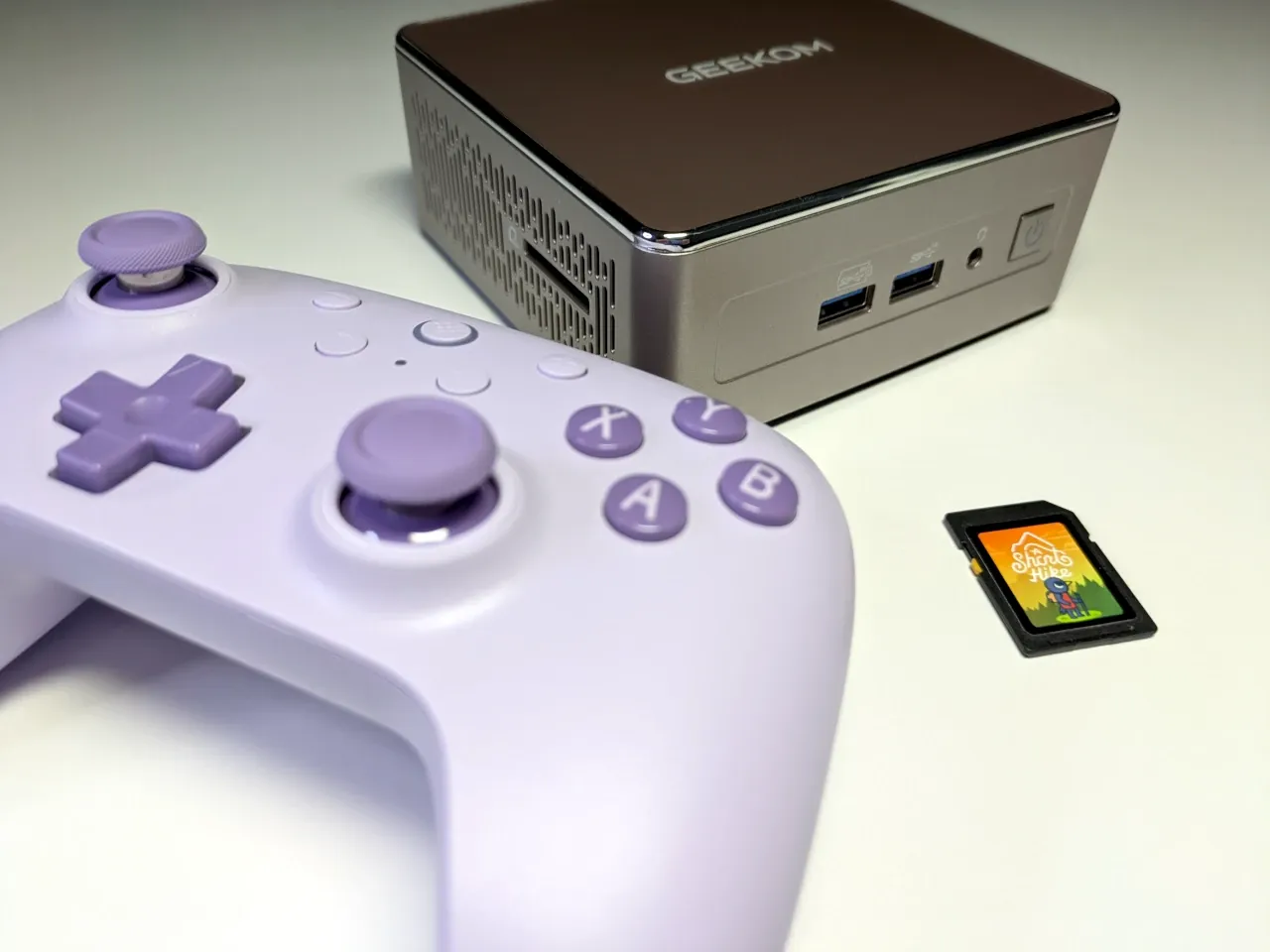
While Kazeta exists as a Linux-based operating system, Alkazar has clearly thought about what it might look like as a physical console. He envisions something compact and functional, a small form factor PC that emphasizes the tactile joy of cartridges.
“If you could design an official Kazeta ‘console box’ (just for fun) what would it look like?” I asked. His answer was simple and specific: “I think it would look almost exactly like the Geekom mini PC I feature on the website. A small form factor with a built-in SD card reader. With a KAZETA logo on it, obviously.”
Carts themselves are at the heart of the experience, and Alkazar has been exploring different form factors for them. “I have also been playing with ideas for game cases. Switch game cases work decently well, and also old audio cassette tape cases can work with some modifications.” The tactile nature of the cartridge is central: it’s not just storage; it’s part of the user experience, something that can be held, labeled, and shared.
He’s even considering more ambitious ideas. “After announcing Kazeta, someone mentioned the idea of using 2.5 inch SATA SSDs for storing games. I really love that idea and I am exploring that now. A small mini PC with a hot swappable SSD cartridge slot would be mind blowing.”
The hardware vision mirrors the philosophy behind Kazeta itself: immediate, tactile, and intuitive. Just as the OS turns selecting a game into a physical act, the console design would make inserting a cartridge satisfying and effortless. Every choice is meant to reduce friction and make gaming a joy, not a chore.
Living with Kazeta:
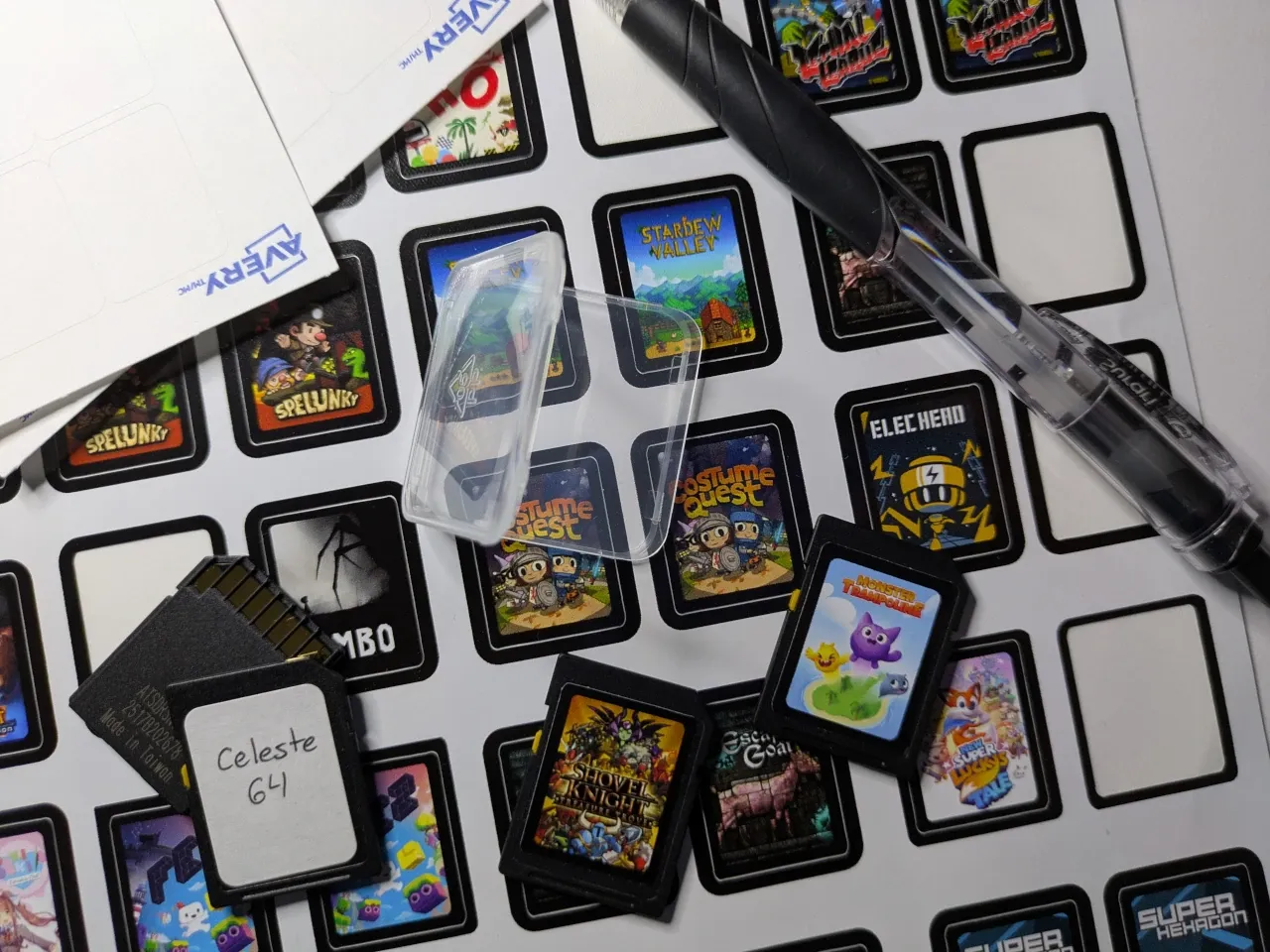
Kazeta isn’t just a conceptual experiment; it’s a system Alkazar actively uses and enjoys. In fact, the OS has changed the way he interacts with games, encouraging him to actually play and complete titles in a way he hadn’t in years.
“This is something I didn’t really expect, but Kazeta has gotten me to play (and actually complete!) way more games than ever before. It is just so magical to use,” he said.
The list of games he’s returned to (or just discovered) is diverse, from platformers to narrative adventures: “I replayed Celeste, one of my favourite games of all time, without even intending to. I played and completed A Short Hike for the first time, which is just a perfect match for Kazeta. I also finished ElecHead, Escape Goat (another favourite), Doki Doki Literature Club (that was a wild one!), and many small Pico-8 games.”
He even found time for a trip back into classic strategy: “Lately, I have been re-playing WarCraft II with a Kazeta system connected to my old CRT PC monitor. I am having so much fun with it.”
For Alkazar, this is proof of what Kazeta was always meant to do: reduce barriers and make playing games effortless and immediate. By turning each title into a physical cartridge, eliminating menus, and isolating save data, Kazeta encourages focus, engagement, and perhaps surprisingly...completion.
It’s a reminder that good design isn’t just about visual polish or cutting-edge graphics. Sometimes it’s about creating a space where players can rediscover the joy of play, the satisfaction of finishing a game, and the tactile delight of holding a cartridge in their hands.
The Future of Kazeta:
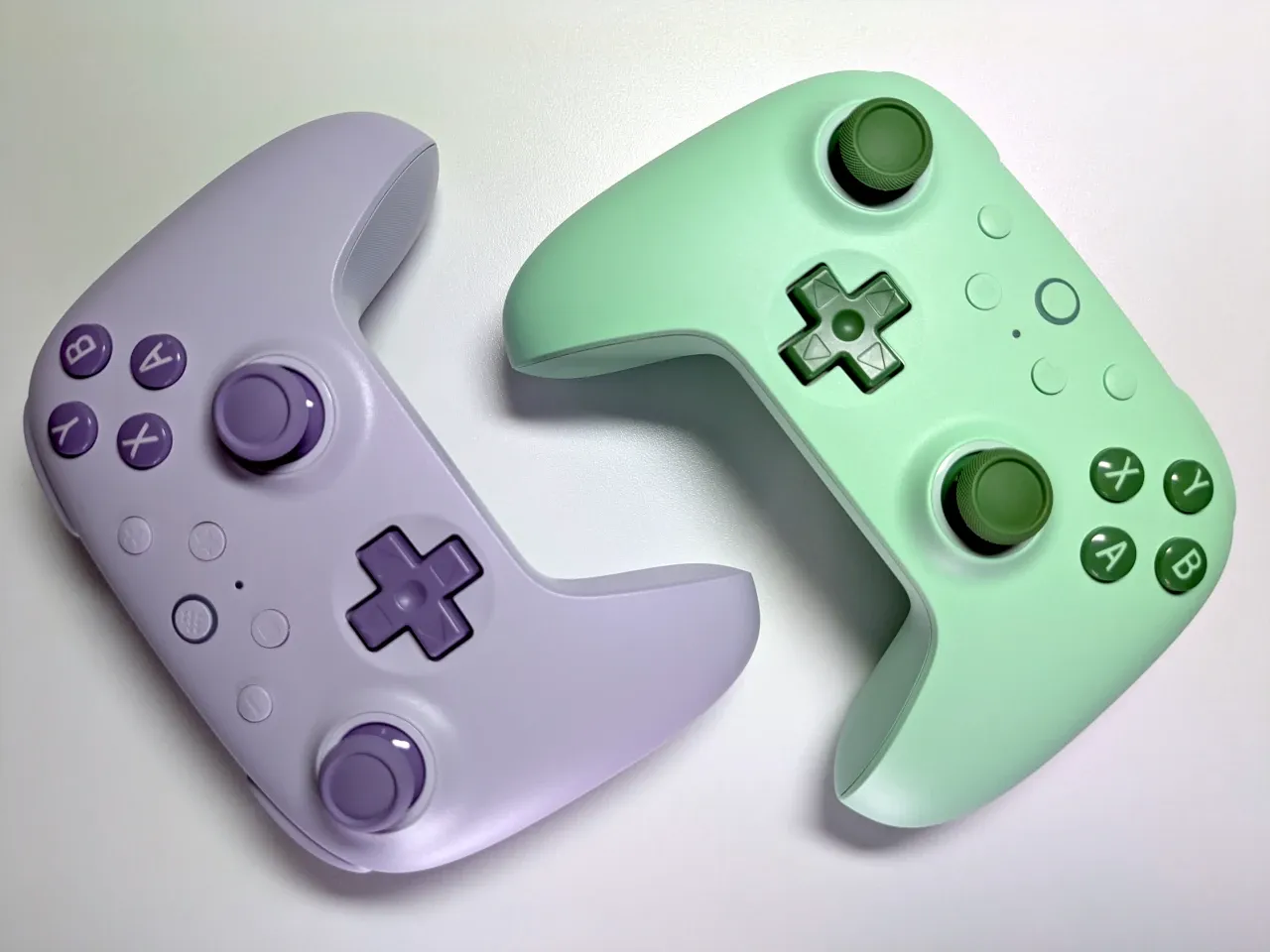
Although Kazeta started as a personal project, Alkazar has ambitions for its growth as a platform that could reach a wider audience. He envisions not just an OS for physical carts, but a system that connects across other platforms and interfaces.
“Kazeta started as a personal project, but do you have plans for its future as a platform for a wider audience? What kinds of features or directions are you hoping to explore next, if I might be so bold as to ask for a sneak peek or some daydreams on new additions?” I asked.
“I want to integrate Kazeta into different front ends, such as Steam and Playtron’s Grid UI. In addition to being able to launch physical carts outside of the Kazeta operating system, I want to create server software which can host ‘virtual’ carts that other operating systems can download, install, and play. Since we already have the carts, may as well use them everywhere we can. This server software would also manage and sync your game save data, finally solving the problem of games with missing cloud save functionality. This will require a lot of work and is more longer term. But I am hoping the Kazeta cart format can become more than just an insular format for a single OS. But we will have to see how that works out, if the format catches on.”
Creating and sharing carts is also a priority. “The other piece of the puzzle, and where I will be putting my immediate efforts, is making it easier to create carts. For example, I am imagining a tool that let’s you download a game from your GOG library and just creates a cart for you. This could even potentially take the form of an ‘export to Kazeta cart’ option in the Heroic launcher. It is still very early and I am exploring options.”
For the OS itself, Alkazar is focused on adding features that enhance playability and accessibility:
- Audio settings
- Display settings
- Bluetooth controller support
- Creating more runtimes, in particular for emulators to make it as easy as dragging and dropping your game ROM to the cart
- Creating a format for game carts packaged in a single file, so you can easily transfer games around — also key for the planned server hosting software
These plans show that Kazeta isn’t a closed experiment or a one-off project. Alkazar sees it as a growing ecosystem, one that could bring the tactile, immediate joy of physical games to more people, while preserving and managing them in a modern, practical way.
Looking Back, Moving Forward:
Kazeta is, at its heart, a love letter to the tactile joy of gaming. It’s about holding a cartridge in your hand, pressing a power button, and diving into a game without friction, login screens, or cloud hassles. It’s about rediscovering the immediacy and delight of consoles from the ’90s, while bridging the gap to modern PC gaming. For me it was instant excitement when I saw Alkazar’s post regarding Kazeta. I wasn’t born yet, in the 1990’s, so that ‘golden era’ of carts and physical media were before my time. But this project looks like it’ll be my way of experiencing the same underlying joys.
For Alkazar, it’s deeply personal. Born from frustration with modern gaming interfaces, inspired by watching non-technical players struggle, and fueled by nostalgia for physical media, Kazeta is both a practical tool and a statement. “I have a tendency to get sucked into things, and the idea for Kazeta really just grabbed me. I thought it was unique and I wanted something like it to exist. I HAD to build it,” he said.
But Kazeta isn’t just for Alkazar. It’s a system designed for anyone who wants to play games simply, immediately, and with a sense of ownership. Its read-only cartridges protect the integrity of games, the BIOS organizes saves in a clean, retro-inspired way, and its future plans promise integration, server support, and even easier creation of carts.
Ultimately, Kazeta asks you to rethink what you value in gaming. Is it flashy features, endless digital libraries, or the convenience of cloud installs? Or is it the joy of browsing a collection, picking up a cartridge, and diving straight into play? For those willing to embrace its simplicity, Kazeta offers the latter, it’s a small but meaningful reminder that, sometimes, the best way forward is to look back.
A huge thanks to Alkazar for taking the time to chat and share his thoughts on Kazeta. Hearing about the inspiration, design choices, and playful experiments behind the OS made it clear how much care and passion has gone into creating something truly different. Whether you’re a retro enthusiast or just curious about a simpler way to play modern games, Kazeta is a project worth keeping an eye on.
If you want to check out more on the project, you can follow these links:
